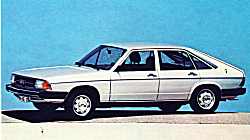http://www.audiworld.com/tech/eng80a.shtml
Water injection, amongst the many options for increasing engine performance, this subject is probably one of the least understood. While frequently dismissed as simply a Band-Aid for poor intercooling, the benefits of water injection stretch beyond simply cooling engine intake air, and when properly implemented, can lead to more power than intercooling alone.
Water injection can be traced back to the earliest years of the internal combustion engine. During the early 1930’s one of the foremost engine designers and researchers, Sir Harry Ricardo, whose studies on pre-ignition led to the development of the octane rating system, investigated the problem of pre-ignition and the affect of alcohol-water injection on inhibiting detonation. Later, during World War II, the National Advisory Committee for Aeronautics, in studies aimed at increasing the power from aircraft piston engines, came to the following conclusion: “The data indicated that water was a very effective internal coolant, permitting large increases in engine power as limited by either knock or by cylinder temperatures.”1 More recently, Saab engineers have investigated using water injection on their production vehicles to maintain low emissions at high power levels. Clearly, the practice of injecting water into an engine is not new, and its benefits are well documented.
Why use water injection?
Engine power production, referred to as brake mean effective pressure (BMEP), is measured by taking the average effective pressure of the cylinders as they progress through intake, compression, ignition, and exhaust strokes. Added power comes as a result of greater pressure, but a higher temperature inside the cylinder accompanies greater pressure. These higher temperatures can lead to detonation, referred to as engine knock, or pre-ignition, both of which are cases where the fuel-air mixture burns in an undesirable manner and can be destructive to an engine. To combat knock and pre-ignition as power increases, a richer air-to-fuel ratio is normally required. If the addition of extra fuel doesn’t provide enough knock protection, then a higher-octane fuel, which is more resistant to knock and pre-ignition, may be used. However, once the knock limit of a higher-octane fuel is reached, can anything be done? This is where a water injection system presents an appealing option.

1 comment:
http://www.audiworld.com/tech/eng80a.shtml
Post a Comment